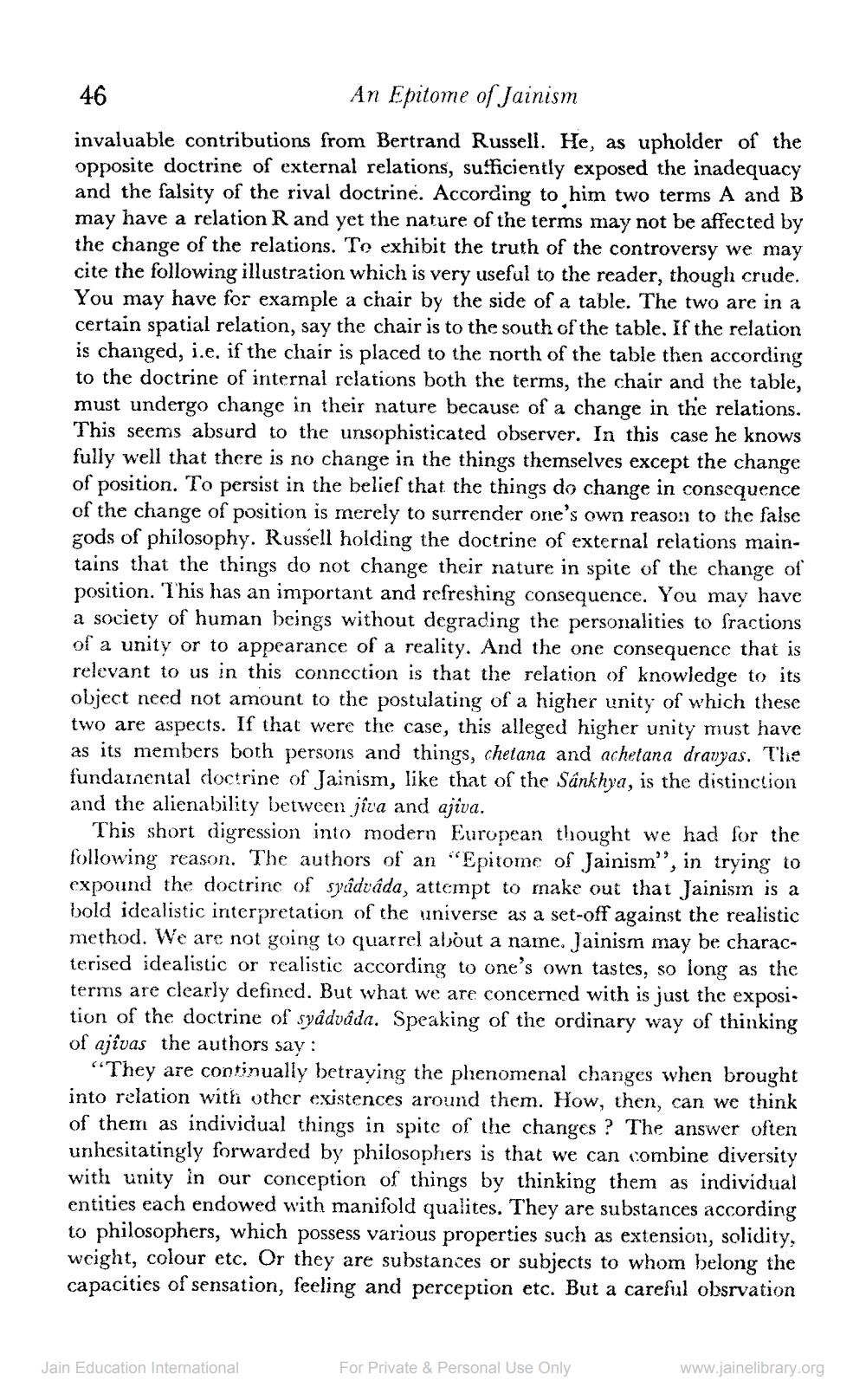________________
46
An Epitome of Jainism invaluable contributions from Bertrand Russell. He, as upholder of the opposite doctrine of external relations, suficiently exposed the inadequacy and the falsity of the rival doctrine. According to him two terms A and B may have a relation R and yet the nature of the terms may not be affected by the change of the relations. To exhibit the truth of the controversy we may cite the following illustration which is very useful to the reader, though crude. You may have for example a chair by the side of a table. The two are in a certain spatial relation, say the chair is to the south of the table. If the relation is changed, i.e. if the chair is placed to the north of the table then according to the doctrine of internal relations both the terms, the chair and the table, must undergo change in their nature because of a change in the relations. This seems absurd to the unsophisticated observer. In this case he knows fully well that there is no change in the things themselves except the change of position. To persist in the belief that the things do change in consequence of the change of position is merely to surrender one's own reason to the false sods of philosophy. Russell holding the doctrine of external relations maintains that the things do not change their nature in spite of the change of position. This has an important and refreshing consequence. You may have a society of human beings without degrading the personalities to fractions of a unity or to appearance of a reality. And the one consequence that is relevant to us in this connection is that the relation of knowledge to its object need not amount to the postulating of a higher unity of which two are aspects. If that were the case, this alleged higher unity must have as its members both persons and things, chetana and achetana dravyas. The fundamental doctrine of Jainism, like that of the Sankhya, is the distinction and the alienability between jîva and ajiva.
This short digression into modern European thought we had for the following reason. The authors of an “Epitome of Jainism”, in trying to expound the doctrine of syâdváda, attempt to make out that Jainism is a bold idealistic interpretation of the universe as a set-off against the realistic method. We are not going to quarrel about a name. Jainism may be characterised idealistic or realistic according to one's own tastes, so long as the terms are clearly defined. But what we are concerned with is just the exposition of the doctrine of syâdváda. Speaking of the ordinary way of thinking of ajivas the authors say:
"They are continually betraving the phenomenal changes when brought into relation with other existences around them. How, then, can we think of them as individual things in spite of the changes ? The answer often unhesitatingly forwarded by philosophers is that we can combine diversity with unity in our conception of things by thinking them as individual entities each endowed with manifold qualites. They are substances according to philosophers, which possess various properties such as extension, solidity, weight, colour etc. Or they are substances or subjects to whom belong the capacities of sensation, feeling and perception etc. But a careful obsrvation
Jain Education International
For Private & Personal Use Only
www.jainelibrary.org




